It is unlikely that the St. Ermin’s Hotel would appeal to everyone. It is posh, and it is posh beyond the wildest imagination. However, without regard to your social status or for whatever your reason to be in London, there is a perfect room that will match your needs at the St. Ermin.
The construction of the hotel began in 1890 on the site of a 15th century chapel dedicated to St. Ermin. The plans were based on a mansion block plan created by Edwin T. Hall, who was also responsible for the Liberty’s department store. It was the mission of this hotel to please its guests when it opened in 1899, and that mission has remained unchanged.
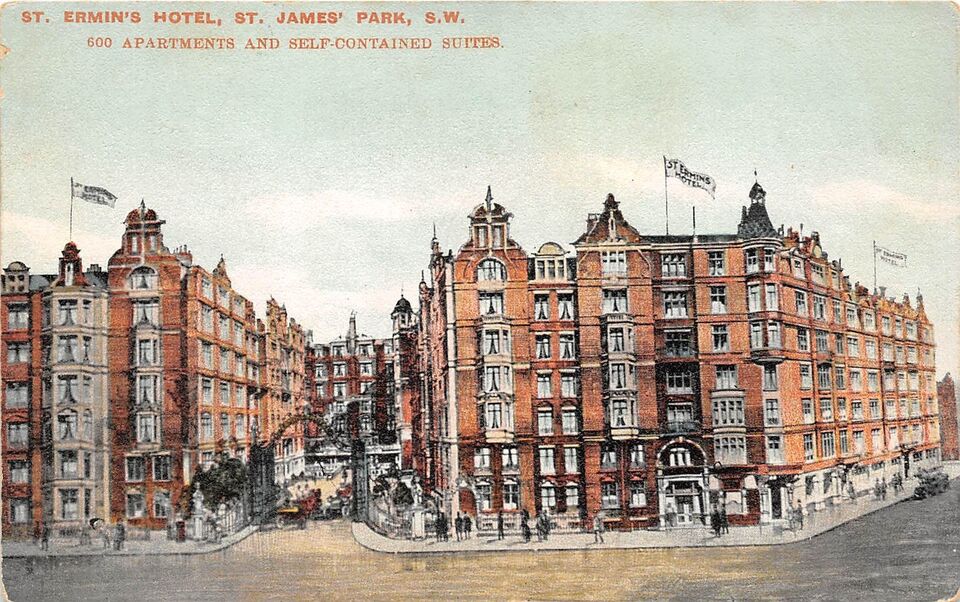
When guests walk through the tree-line courtyard of the St. Ermin’s Hotel they are not just entering a luxury hotel, they are walking back in history. People who made history have stayed in this hotel and they influenced events that happened less than a century ago that still shape the way we live today.

If your historical interests are wartime history, plots to overthrow governments, high crimes and misdemeanors, or personal tragedy, the St. Ermin’s Hotel has seen these and more in its colorful past. And, it is likely that things are happening there today that sometime in the future will be added to the history books.
Through the years several renovations have been made to the original mansion block apartments completed in the late 19th century. Today many features of the redesigned interiors – especially the dynamic plasterwork – can be seen in the entrance hall, reception counter, and lounges. As the first refurbishments began, the owners recognized that modern technology enhanced the guest experience. In a 1910 promotional brochure it is mentioned that telephones had been installed in all bedrooms.
Do you know about Winston Churchill’s S.O.E.? The following account is from the hotel’s resident historian:
In 1940 Winston Churchill held a historic meeting at St. Ermin’s Hotel. He asked a group of remarkable people to join him in ‘Setting Europe Ablaze’ – this elite set, were soon to be the founding members of the Special Operations Executive or SOE.
The SOE, also known as Churchill’s Secret Army, formed the basis of the SAS and took over an entire floor of St. Ermin’s Hotel for its headquarters during WWII. Meanwhile, MI-6 was stationed two floors above.
Churchill often enjoyed a glass of his favorite Champagne in Caxton Bar, so if you happen to be in Caxton Bar, you can raise a glass to some of the bravest men and women in history.
Do you like to be close to the action? The St. Ermin’s Hotel is close to Parliament: The historian’s story continues and a “Division Bell” is mentioned. Such bells were often hung in public houses and similar places to announce that the “time to vote” had arrived. The term “division” in Parliament is a vote of some substance.
A Division Bell hangs in our lobby, it was used to signal the members of Parliament within earshot that they had only eight minutes to get to the House of Commons to vote for or against a resolution.
Several such bells were located in what was known as the Westminster Bubble – an eight minute fast walk back to the Houses of Parliament. The bell is authentic in every detail, aside from the fact that it no longer rings because the practice of calling MPs back to the House has been discontinued.
However, if rumors are to be believed, Members of Parliament could use a secret tunnel to get back to Parliament in much less time than eight minutes. This tunnel was thought to be located under the grand staircase in the lobby and it runs directly to the House of Commons.
Distances are important. There are occasions on most days of the calendar that Members of Parliament need to be present at certain functions in certain locations. The distances from the hotel to the following places are posted at the hotel:
From the St. Ermin’s Courtyard to _____ it is _____ x/10ths of a mile.
| St. James Park 3/10 mi Westminster Abbey 3/10 mi Victoria Palace Theatre 4/10 mi Houses of Parliament 4/10 mi Buckingham Palace 4/10 mi Big Ben 5/10 mi Westminster Bridge 6/10 mi Victoria Station 6/10 mi Trafalgar Square 8/10 mi Charing Cross 8/10 mi The nearest airports are: London City Airport (LCY) 10.8 mi Heathrow Airport (LHR) 16.6 mi Gatwick Airport (LGW) 41.1 mi Luton Airport (LTN) 34.0 mi |
The distance to the nearest postcard shop is not posted.
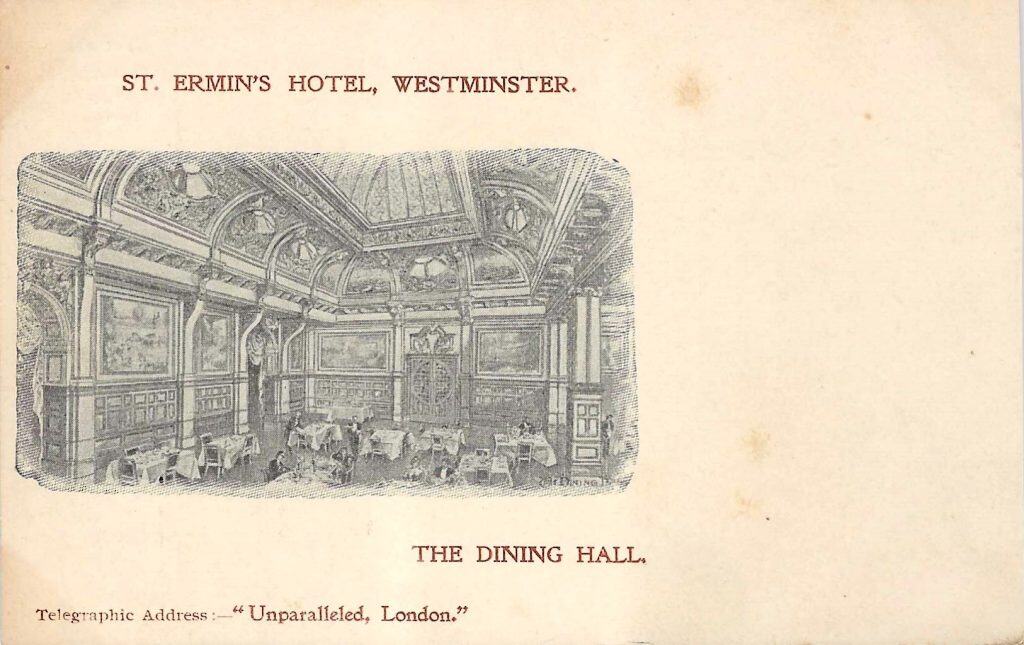
***
The Postcards
This set, “Unparalleled, London” aptly describes the images in this twelve-card set as they may have appeared circa 1905 (the only “used” card is postmarked on November 5, 1904. It was mailed to the 11th arrondissement of Paris that at the time was home to just under a quarter-of-a-million Parisians. The curiosity of the set is that only nine of the cards show scenes at or in the hotel – the six above and three others with captions: The Lounge, The Smoke Room, and The Courtyard. The last three cards in the set show the Houses of Parliament featuring the south tower, the Houses of Parliament featuring Big Ben, and Poet’s Corner in Westminster Abby.
Other postcards of the St. Ermin’s Hotel are found in most dealer’s London inventory, but aside from this set, they are few. Good luck if you attempt a search.
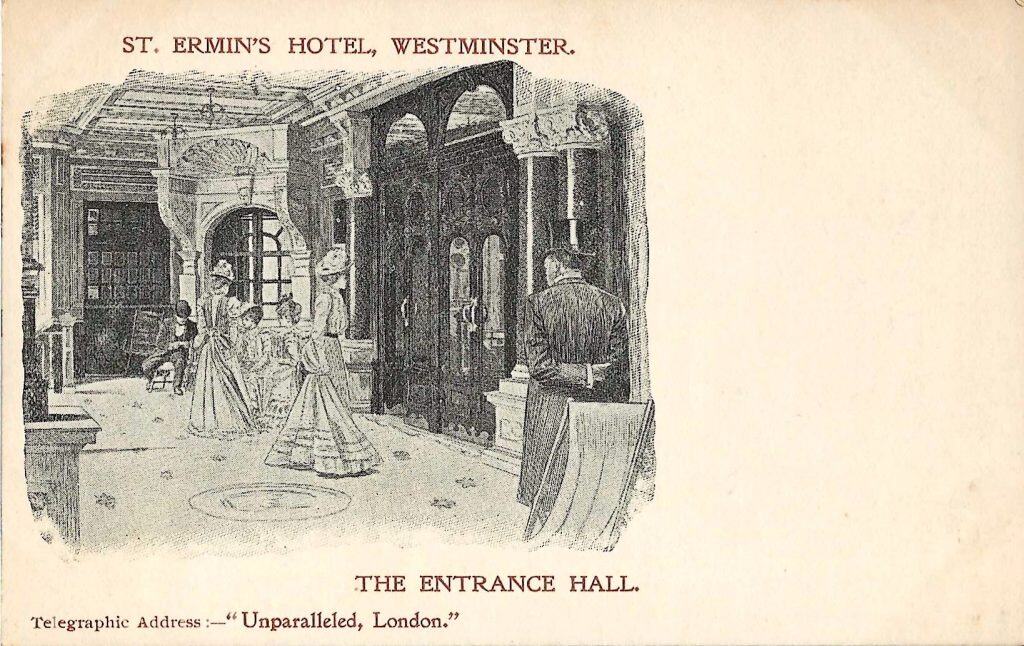

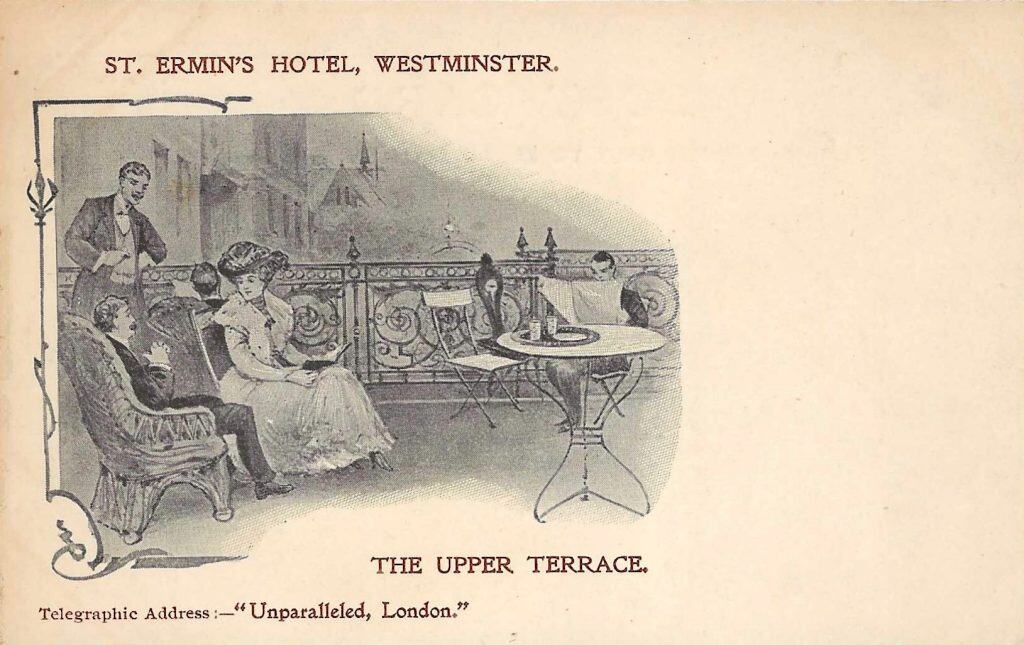
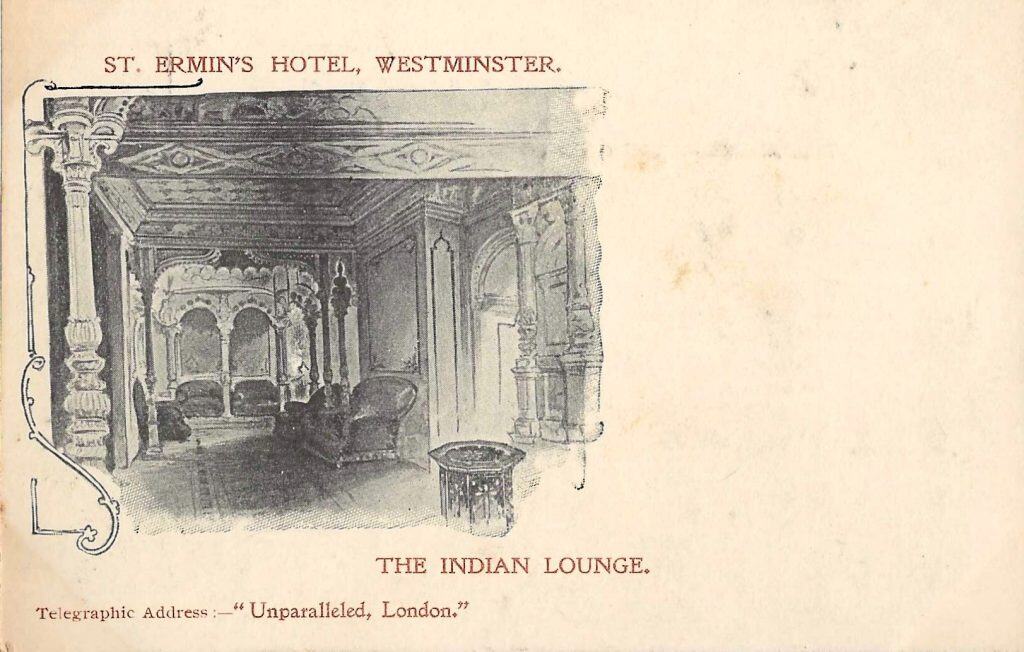
As my dad was named Edwin, and he was born in London the name of the architect of Saint Ermins’s got me right away. It is a beautiful set of cards! Evidently people were staying very busy not just relaxing as we look at their timetable. Puts a different light on the subject.
Wow I’d stay there if I was travelling again
I was familiar with the Pink Floyd album The Division Bell, and now know the meaning of the title!
My wife and I stayed at the Saint James Hotel on our honeymoon in 1983. It was near the St. Ermin’s Hotel. A great neighborhood to stay in. We saw Queen Elizabeth three times. We walked past the St. Ermin several times. I dreamed of staying there if we ever returned to London especially since there were Rolls Royces parked in front. However when we returned to London in 2015, we stayed at the Doubletree by Hilton across from Victoria Station. Not a bad hotel but not in the same league or price range as the St. Ermin.